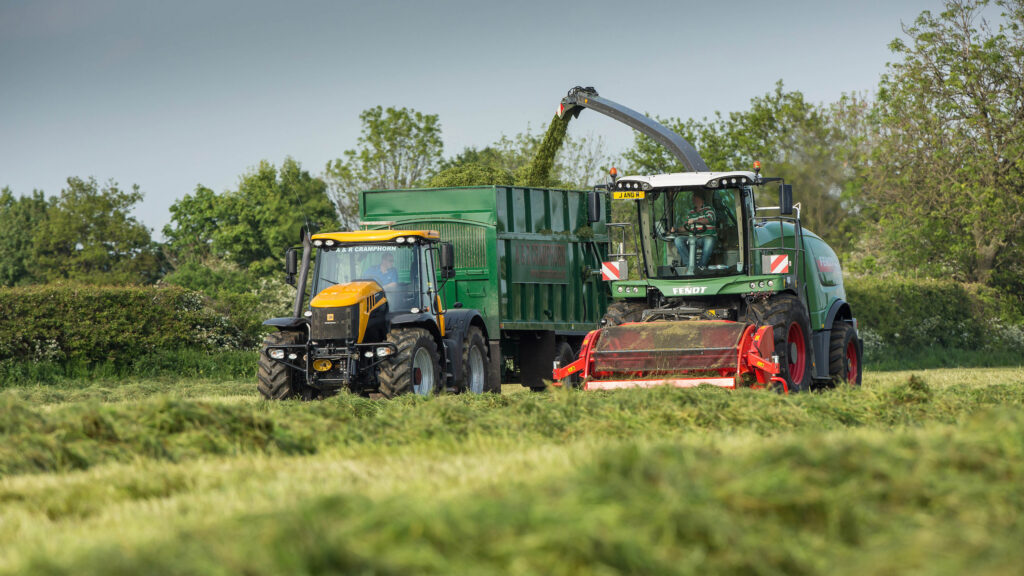Why fertiliser rates are key to N-free first-cut silage leys
 © Tim Scrivener
© Tim Scrivener With about a month until the start of multicut silage season, recent cold temperatures have slowed grass growth.
This means accurate nutrient applications will be essential to avoid excess nitrogen still in the grass plant at mowing.
See also: How multi-cut can deliver profits of £333/ha over three-cut silage systems
Calculating how much nitrogen (N) grass leys will use – then timing applications accordingly – will ensure that silage swards are nitrogen-free by 25 April.
This means fields can be cut when there is a window of opportunity, says Mole Valley’s head of grassland forage agronomy, Lisa Hambly.
“Grass growth was good up till Christmas, but soil temperatures have been lower this year so far.
“Data from one of our customer’s weather stations in Cornwall – typically one of the warmer areas of the country – showed that soil temperatures were still sitting at around 6C in mid March.
“This compares to 10C at the same time last year,” she explains.
Soils slow to warm
The result is that, nationally, average daily grass growth is just 11-12 kg of dry matter (DM)/ha, compared with a forecast 15-18kg DM/ha, says Lisa.
Cold weather has led to less uptake of nitrogen by the grass plant. “Some fertiliser was put on a month ago and it has just sat there, which isn’t what we expect at this time of year,” she says.
However, she thinks soils are now starting to warm up and it is a good time to plan applications of N, accounting for any slurry that has already gone on.
“This can be based on 2.5kgN/ha a day uptake by the plant – but give yourself some leeway as grass needs to [fully utilise and] be clear of N before cutting.”
Testing silage swards seven to 10 days pre-cutting will determine N levels: any with more than 10% should be left to grow on and retest, she advises. “Then ensure you are ready for second cut on 25 May.”
False economy
Farms that are low on silage stocks may be tempted this year to “wait and see” to get more bulk out of the first cut. However, that approach could risk another poor forage year, says Lisa.
“It’s a false economy to leave it another one to two weeks as you won’t get full [quality] potential,” she points out.
“The idea is to take what you’ve got, reset the sward, then warmer soils and more moisture [in May] will lead to good growth for the next cut.
“Cutting earlier will help quality and, if quantity is needed, later cuts can be bulked up.”
Lisa also advises that sulphur should be included along with any N applied to ensure good protein levels in grass.
Many fields are showing nutrient stress as a knock-on effect from last year’s wet weather, when soil nutrients were lost, she says.
